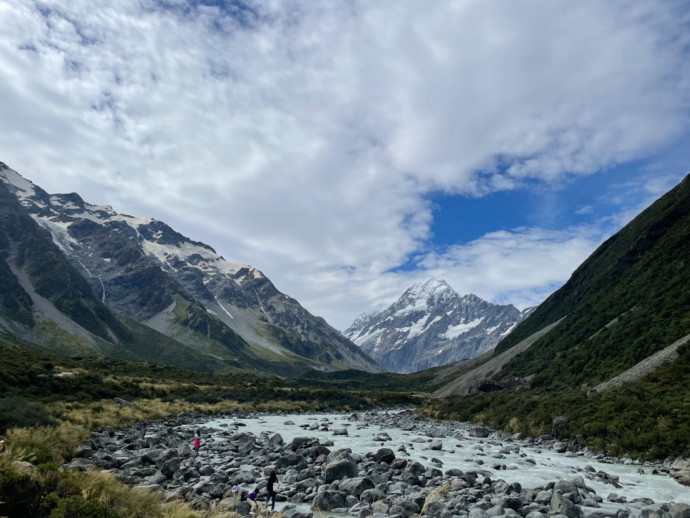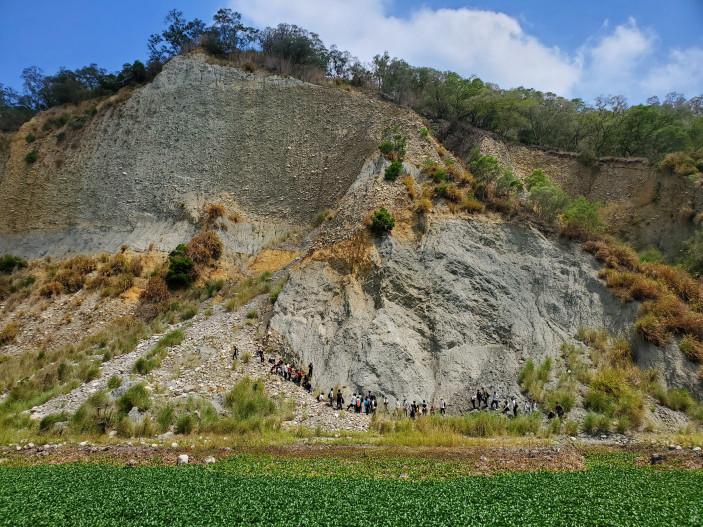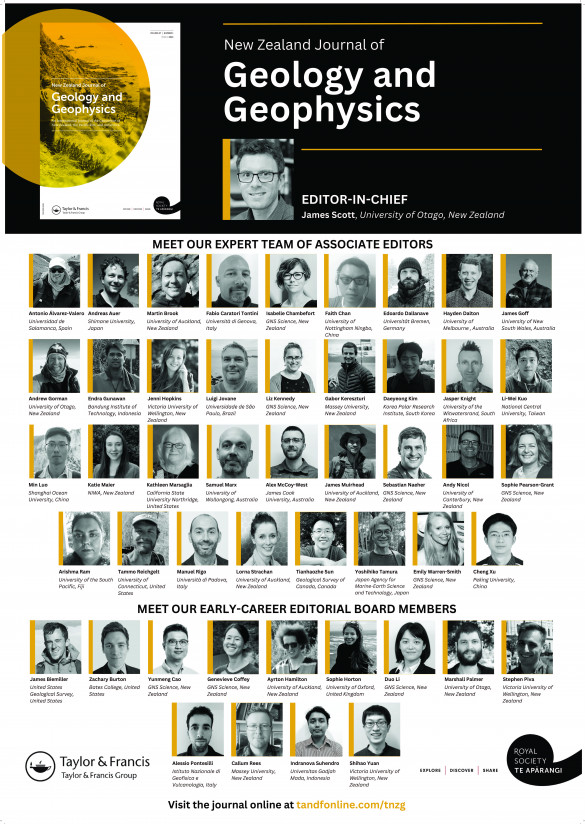News
Published 30 May 2024NZJGG call for papers: Special issue on active plate boundary faults around the Ring of Fire: deformation, structure, seismicity, and hazards

This special issue aims to provide a forum for geophysical and geological communities to share observations, models, concepts, and ideas on fault-related processes along the Pacific Rim 'Ring of Fire'.
Fault slip, related deformation and ground shaking generate many societal hazards at active plate boundaries (e.g., subduction zones). Observations of these deformation phenomena present unique opportunities to study solid Earth dynamics and geohazards over broad spatiotemporal scales. Studies of the patterns, rates, and underlying mechanisms of seismic versus aseismic slip, as well as the various interconnected mechanical, hydrological, thermal, and chemical factors affecting the slip, and their relation to the resultant ground shaking and crustal deformation are all critical for understanding the nature and the hazard potential of the cyclic strain accumulation and release at plate boundaries. Cumulative deformation beyond multiple earthquake (or slow slip) cycles, and mass transport into, along, across, and around plate boundary fault zones, contribute to the longer-term evolution of margin morphology and structure. Systematic investigations linking these multi-timescale phenomena help us understand broader-scale geodynamic processes and their role in seismicity and tsunamigenesis, ultimately informing and improving hazard assessments.
We seek contributions on topics including, but not limited to, fault-zone structures, seismic and aseismic fault slip, rupture processes of large earthquakes, distribution of seismicity, stress and strain in earthquake cycles, role of fluids, thermo-hydro-mechano-chemical reactions in fault zones, and earthquake-triggered hazards including tsunamis and landslides, around the Ring of Fire.
Contributions are encouraged from multidisciplinary observations including, laboratory experiments on rock and fault material properties, onshore and offshore geophysical monitoring, geological and paleoseismological studies of faults, and geophysical imaging of tectonic structures, as well as modelling studies integrating these observations to address earthquake cycles, dynamic rupture, and longer-term tectonic or geodynamic processes.
The New Zealand Journal of Geology and Geophysics, a Q1 journal in Geology (Clarivate Analytics, 2023), currently has an Impact Factor of 2.2. There are no page charges or publication fees under the traditional subscription-based publishing model. Furthermore, authors affiliated with any of the 42 universities in Australia and New Zealand or a growing range of global institutions, may be eligible to publish your articles Open Access at no cost to yourself.
Submission Information
Please send a preliminary title, indicative author list and a short descriptive paragraph outlining the scope of your proposed manuscript to Editor-in-Chief, Prof. James Scott at james.scott@otago.ac.nz and the Publishing Office at Publish@royalsociety.org.nz by 31 August 2024. These will be considered by the team comprising NZJGG editors: Dr Tianhaozhe Sun (GSC, Canada), Dr James Biemiller (USGS, USA), Dr Genevieve Coffey (GNS, NZ), Prof. Li-Wei Kuo (NCU, Taiwan), Dr Duo Li (GNS, NZ) and Dr Shihao Yuan (Mines, USA & VUW, NZ).
Authors will be notified of the result and formally invited for full submission by 30 September 2024, while the final submission deadline is 31 August 2025, with the aim of getting the special issue formally published in late 2025. Individual articles will be published online with a DOI before they appear in the special issue.
Acceptance for publication will depend on the outcome of the normal peer review process and authors meeting critical time schedules. It is important that your manuscript is prepared according to the Instructions for Authors of the New Zealand Journal of Geology and Geophysics.

A photograph of the exposed Sanyi fault on the north bank of the Dajia River. Along the main fault zone, the gently east-dipping Miocene Kueichulin sandstone is thrusting onto the flat-lying Pleistocene Toukoshan conglomerates and late Quaternary alluvial deposits. Climbers marked the location of the main fault zone. Credit: Li-Wei Kuo

